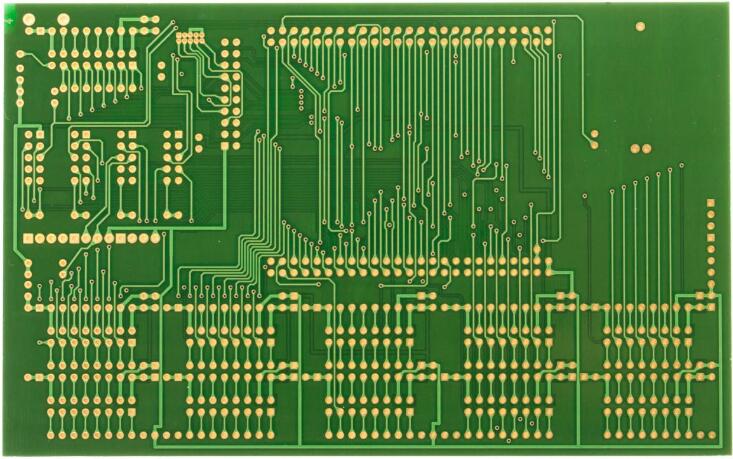There are mainly physical methods for recycling waste PCB Chemical and biological methods. Physical method mainly includes mechanical crushing Air separation, magnetic adsorption and other technologies; Chemical methods are divided into pyrometallurgy Hydrometallurgy, etc.
1. Paint stripping of PCB board.
The surface of the PCB board is generally coated with a layer of paint to protect metal. The paint shall be removed before recycling. Paint removers include organic paint remover and alkaline paint remover. Organic paint remover has great toxicity and great harm to the human body and environment, while alkaline paint remover has relatively small toxicity. We get the best formula of paint removal through experiments: put the cut PCB into 10% sodium hydroxide solution. Add 0.5% auxiliary a, 0.5% auxiliary B, 0.05% corrosion inhibitor mercaptobenzotriazole, and heat in a water bath. The paint on the surface can be completely removed within 30min, and the exposed metal can be further recovered. Alkaline paint stripping is to separate the place where the paint contacts the circuit board. The paint mainly exists in the original structure and can be recycled.

2. Physical method of PCB recycling
The physical method is based on the density of the material Electrical conductivity Magnetism Surface wettability and other physical properties are recovered. The main process is disassembly Fracture. Separation and recovery of precious metals Dispose of hazardous substances.
2.1. The general sequence of selective disassembly of electronic waste is: select reusable parts. Disassemble harmful components and classify parts of various materials. The disassembly method includes manual disassembly Mechanical disassembly Automatic disassembly. For the automatic disassembly of PCB board, bath washing or hot air heating are used to dissolve the solder, and then the vacuum clamp or robot is used to remove the components on the surface of PCB board.
2.2. Fracture. PCB board is broken by impact Extrusion crushing and shear crushing. At present, the successful application is ultra-low temperature freeze crushing technology, which can crush tough materials to 0.074mm after embrittlement at low temperature, so as to completely dissociate metal and non-metal. Two stage crushing technology is often used in China, that is, coarse crushing with shear crusher, and then fine crushing PCB particles to the specified particle size with dry or wet crusher, so as to realize the complete separation of metal and non-metal.
2.3. The crushed material is sorted according to the density of each component Grain size Magnetic conduction There are usually dry and wet separation. Dry separation includes dry screening Magnetic separation static electricity. Density and eddy current sorting, etc. Wet separation has hydrocyclone classification Flotation Hydraulic shaker, etc. The recovery rate of wet separation is high, but the cost is also high. The reagents used pollute the environment. The waste residue and waste liquid after separation cause secondary pollution to the environment. The cost of dry separation is relatively low The main disadvantage is that the separation rate of fine particles is low.
Density sorting: the movement of particles in a fluid depends not only on the particle density, but also on its size and shape. In order to reduce the scale effect and control the relative movement of particle density. The metals in PCB were separated and enriched, and the effect of air separation and enrichment of metals under different particle sizes was investigated.
Physical recovery of PCB board has the advantages of simple process, easy scale, relatively small secondary pollution, low energy consumption, low cost and high separation efficiency, which meets the requirements of environmental protection and recycling. However, due to the overlap of various physical properties, the complete separation between metals cannot be realized Large initial investment and other disadvantages.